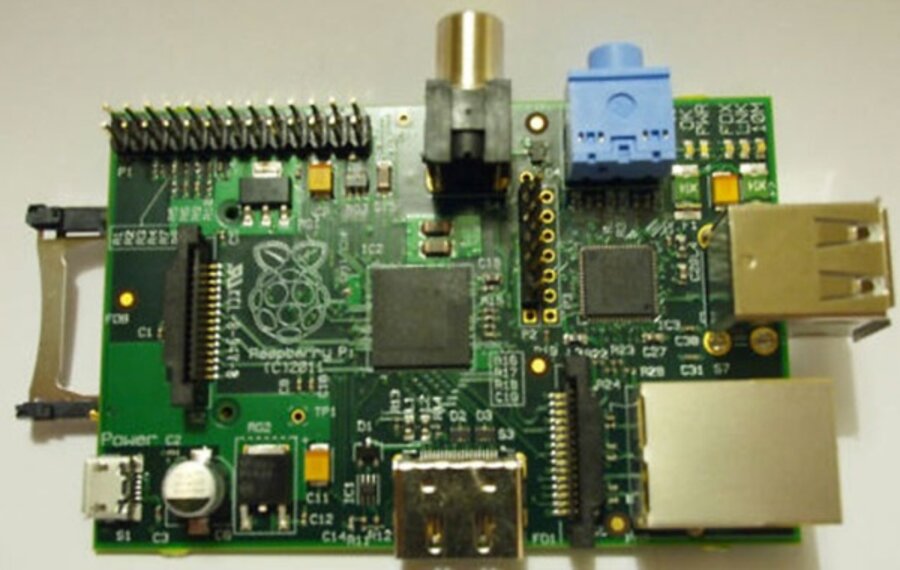Say hi to the Raspberry Pi, the $35 computer
Loading...
Who would’ve thought that the release of a $35 computer, Raspberry Pi, would crash two websites? Well, everybody.
Released early today, the inexpensive computer sold out within hours, sending the websites of distributors Premier Farnell and RS Components into ordering frenzies.
Raspberry Pi is the size of a chip, small enough to fit in the palm of your hand. The circuit board has an Ethernet connection, an audio jack, two USB slots, and a port for an SD memory, plus RCA video and HDMI capabilities.
The $35 price does not include any extra hardware. The Raspberry Pi user guide says it’s more or less essential to buy a USB keyboard, monitor, prepared operating system SD card, and “cables.” Highly suggested extras include a USB mouse, powered USB hub, and – of course – Internet connectivity.
With no internal storage, built-in operating system, or accompanying monitor, it’s hard to call this a full-fledged computer by today’s standards. But the Raspberry Pi’s value lies in its adaptability. They are designed to be tinkered with. The computer is the chip – so some knowledge of programming is key.
“The primary goal was to build a low cost computer that every child could own, and one where programming was the natural thing to do with it,” co-founder Robert Mullins told CNN.
The Raspberry Pi is ideal for children in that its $35 price means any programming-gone-wrong incidents won’t be devastating. The computer is set to have an official educational launch later in 2012, after the initial trial period. By then, developers will have had months to play with the computer and design additional software.
No, the Raspberry Pi doesn’t have the power of today’s higher-priced desktops and laptops. But it could persuade kids to delve back into computer programming, or spark a renaissance of personalized software beyond that of the App Store.
For more tech news, follow us on Twitter @venturenaut. And don’t forget to sign up for the weekly BizTech newsletter.





